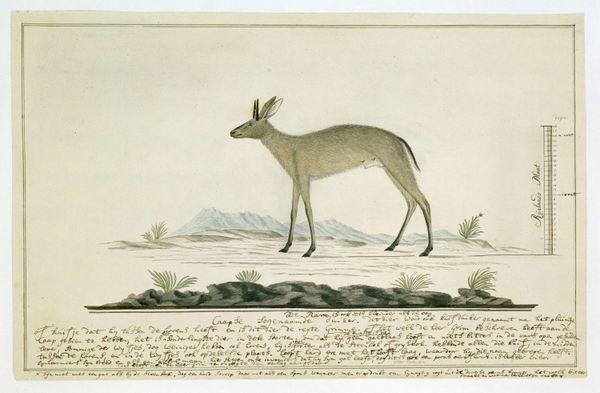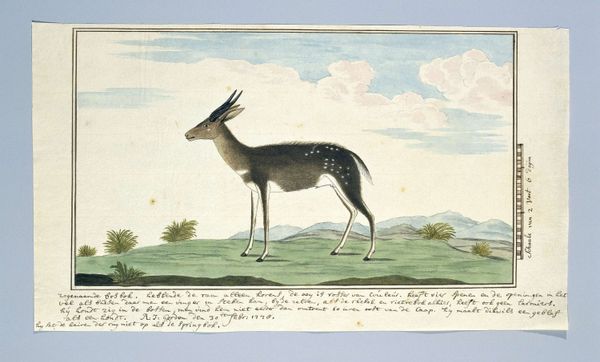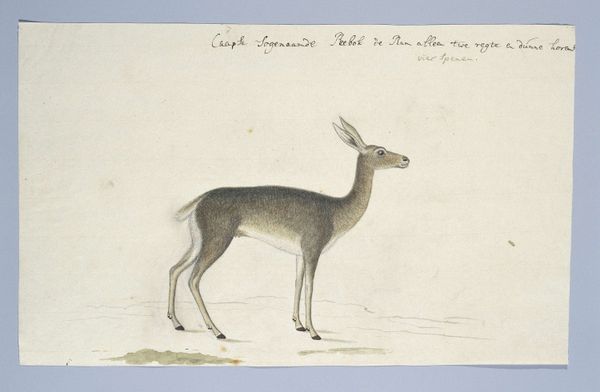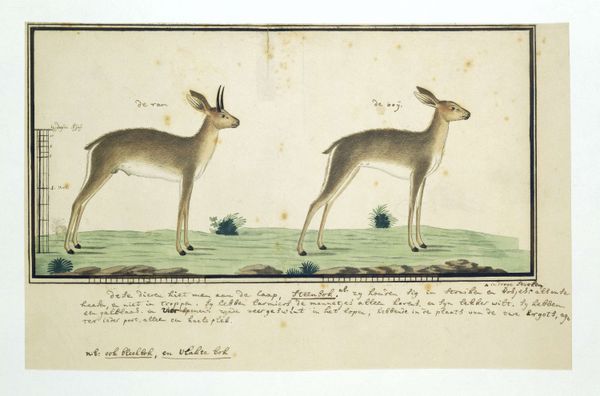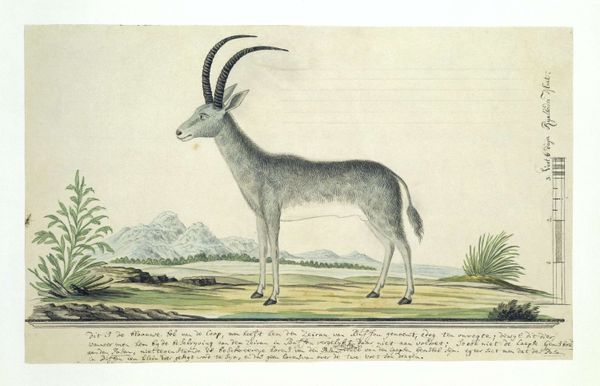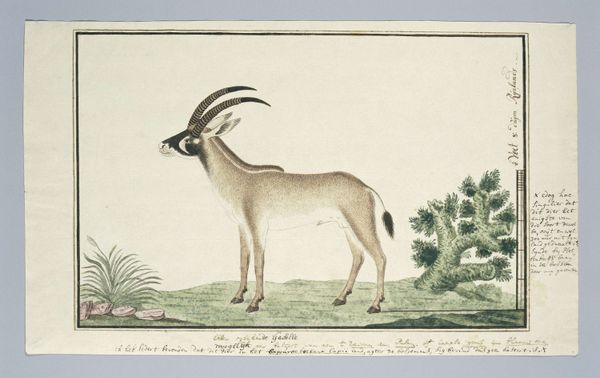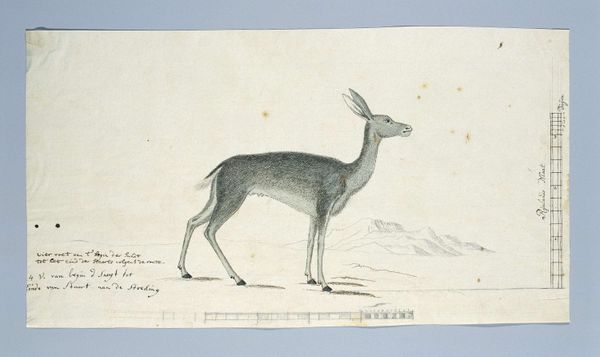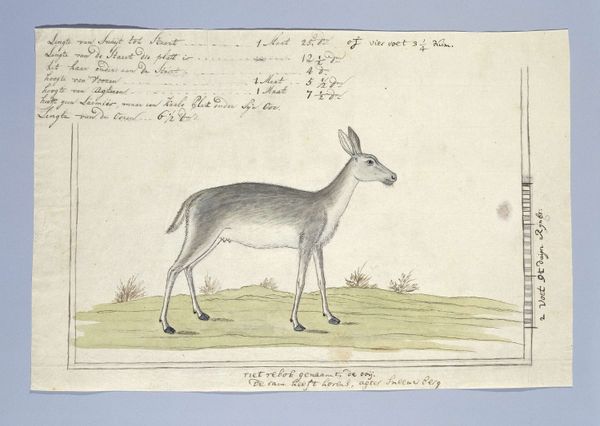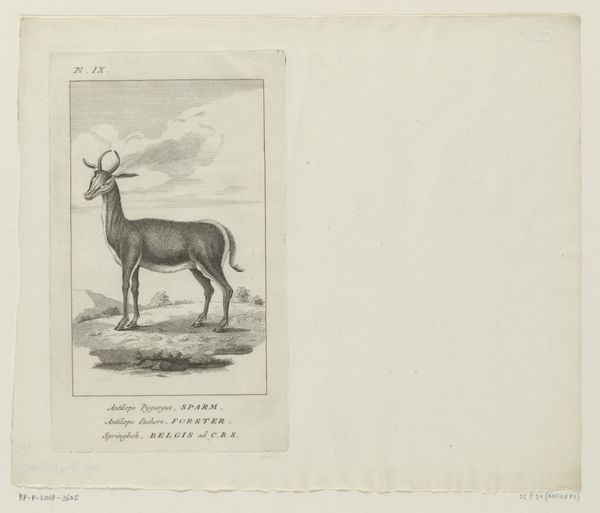
drawing, coloured-pencil, watercolor
#
portrait
#
drawing
#
aged paper
#
coloured-pencil
#
animal
#
traditional media
#
landscape
#
personal sketchbook
#
watercolor
#
journal
#
coloured pencil
#
ink colored
#
sketchbook drawing
#
watercolour illustration
#
sketchbook art
#
watercolor
#
realism
Dimensions: height 660 mm, width 480 mm, height 249 mm, width 408 mm, height 208 mm, width 408 mm
Copyright: Rijks Museum: Open Domain
Curator: This drawing is attributed to Robert Jacob Gordon, dating from somewhere between 1777 and 1786, and depicts a Sylvicapra grimmia, also known as a Common Duiker. It is rendered in watercolor and colored pencil. Editor: It's strikingly understated. The color palette is quite muted—various shades of brown and grey—which, combined with the delicate linework, creates a sense of gentle melancholy. Curator: Gordon was a military commander and explorer for the Dutch East India Company, so it’s impossible to separate this image from its colonial context. The duiker becomes an object of scientific inquiry, classified and cataloged, part of the project of knowing and therefore controlling the land and its resources. Editor: Indeed, but consider the composition itself. The animal is centered and carefully delineated, set against a minimalist landscape. There’s a certain formality, a scientific detachment, even, that draws the eye to the details of the animal’s form. Notice the subtle gradations of color that define its musculature and fur, almost hyperrealistic, or trying to be. Curator: That attempted realism, though, flattens the animal, reduces it to a specimen. It lacks agency, any real context. The landscape, barely sketched, reinforces this sense of isolation, alienation even. And we have to consider Gordon's own positioning, as a European observing and representing an African animal; there's inherent power dynamic there. Editor: Yes, but look at the detail again! The precise lines create a sense of almost tactile reality. And while the colors are muted, that contributes to the work's somber, almost reverential mood. The scale ruler seems integrated within the work, instead of pasted after completion; there's care, devotion almost. Curator: And there lies the paradox of colonial observation. It aims to dissect, classify, and dominate, yet sometimes captures a fleeting, unintentional beauty. But the power dynamic remains central, a filter through which we must view this image. Editor: Perhaps so, but I still find myself drawn to the quiet, melancholic beauty of the duiker itself, a testament to the artist’s careful hand. Curator: I see it as a document embedded within layers of power, revealing more about the observer than perhaps he intended.
Comments
No comments
Be the first to comment and join the conversation on the ultimate creative platform.
